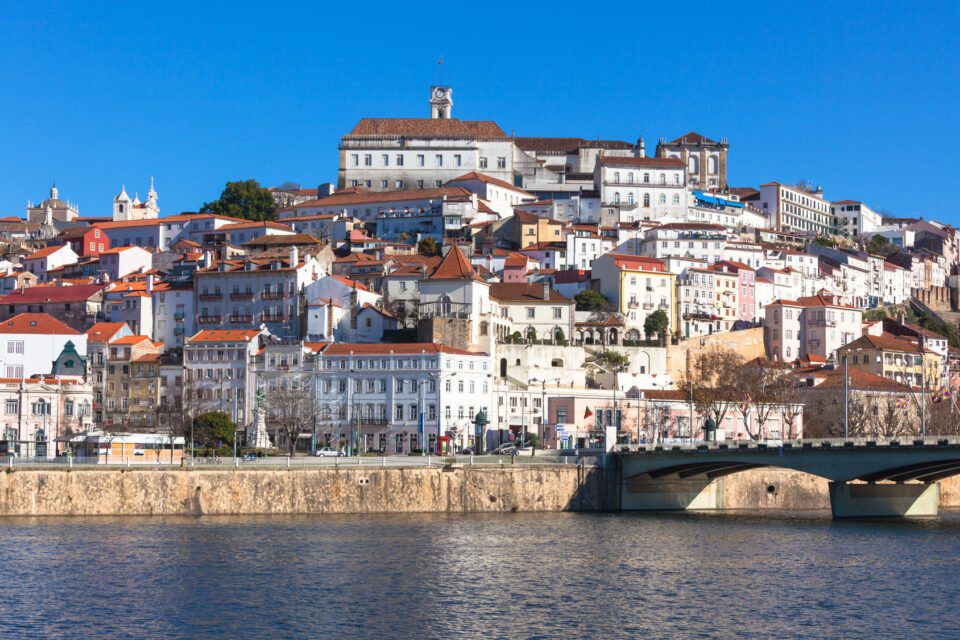Coimbra (Portugal) – one of the most beautiful cities in Europe, the symbol of which is the oldest university in the country, built in the 13th century. It is safe to say that this is a kind of Portuguese Oxford, with no less interesting holidays and deep traditions.
General information
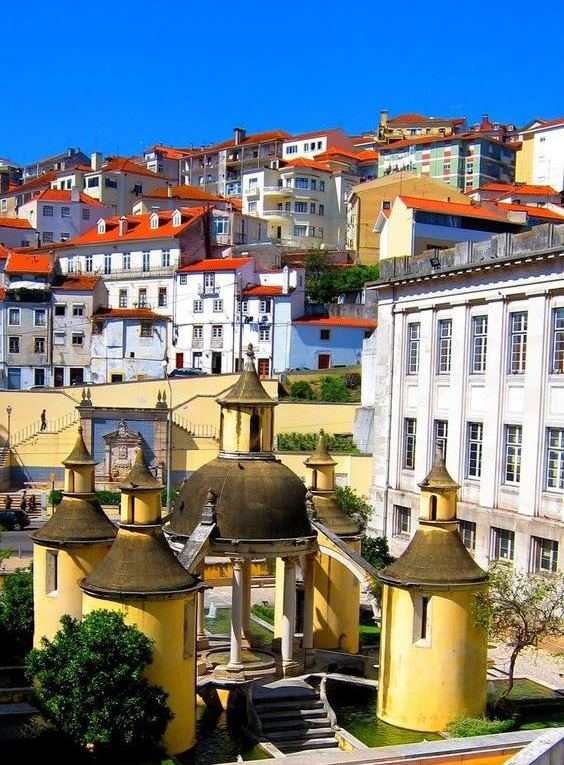
Coimbra is a city in the central part of the country with a population of 105 thousand people. The city used to be the capital of Portugal, but now it is known only for one of the oldest universities in Europe, which occupies a significant part of Coimbra.
The city is also the administrative center of the Coimbra District, which consists of 17 localities. In total, about 440,000 people live in the district.
As for the coat of arms of the Coimbra district, it is quite unusual for Portugal: on the right is an Alanian leopard, which is a symbol of the Alans – a people of Scythian-Sarmatian origin.
Scientists believe that one of the groups of this people gave rise to the Ossetians and Caucasians. Norse and Icelanders also descended from the Alans. The Portuguese believe that these peoples have common roots with the inhabitants of Coimbra.
Coimbra can be divided into 2 parts. “Upper Town” is an old district with historical sights, surrounded by a medieval wall. Nizhny Gorod is a larger area with modern architecture.
University and Library of Coimbra

The University of Coimbra is the oldest and largest educational institution in Portugal, founded in Lisbon back in 1290. For several centuries, it wandered from one city to another, and “settled” in Coimbra only in 1537.
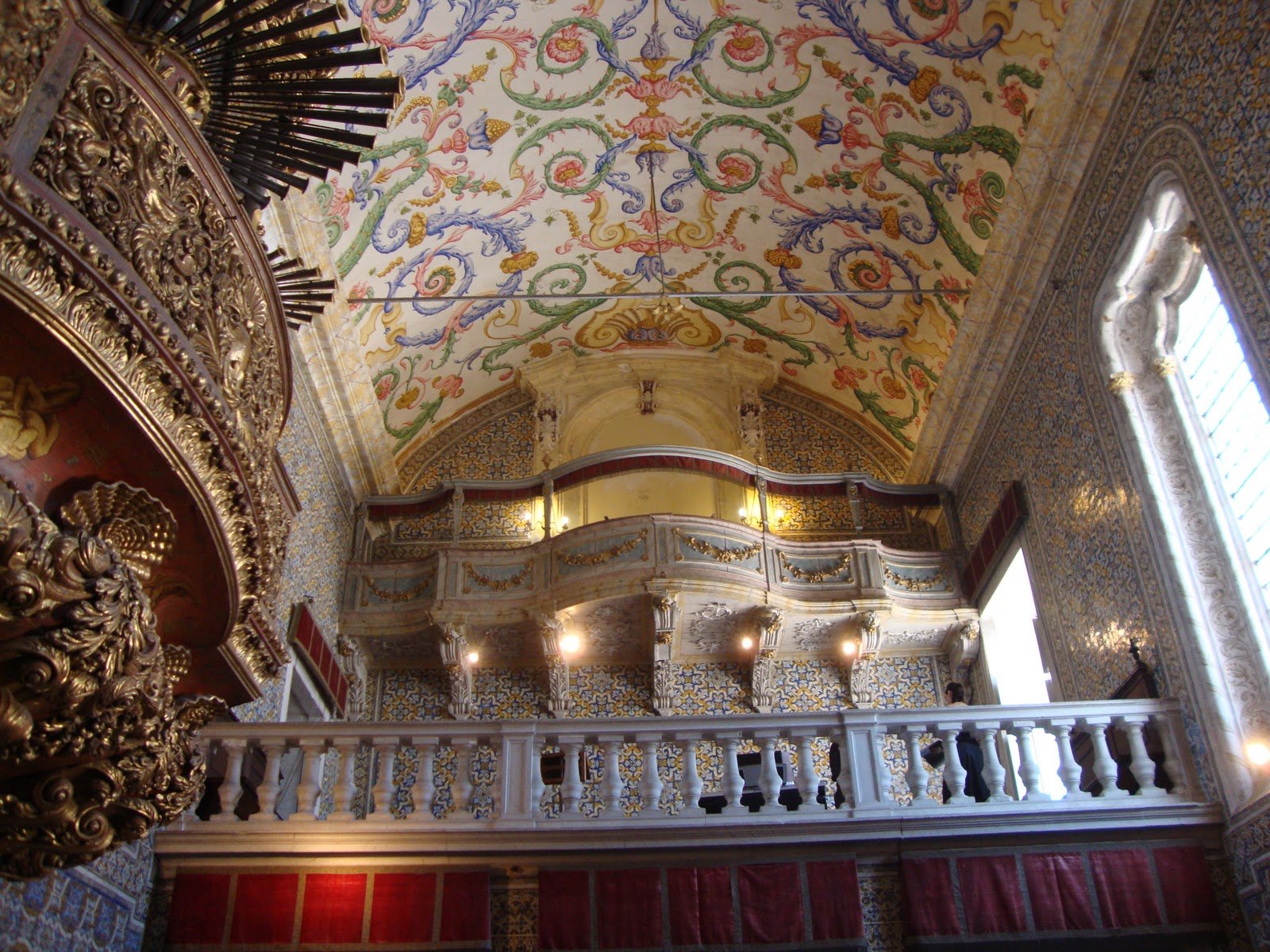
From century to century, the university expanded, and, in the end, began to occupy a considerable part of Coimbra. Today, all faculties and institutes are located in different districts of Coimbra and occupy the premises of ancient buildings, some of which are world-class architectural monuments. It is worth mentioning that the university itself has been under UNESCO protection since 2013.
Today, the University of Coimbra has 8 faculties (the largest are mathematics, medicine and law) and 4 campuses. The university is a recognized leader in the field of education in Portugal, because many sciences are studied at the university: algebra, geometry, philosophy, mechanics, engineering, and various languages.

As in many other private educational institutions, students of the University of Coimbra are required to wear a uniform: black robes with colorful ribbons. By the way, the ribbon does not perform a decorative function at all: its color indicates the faculty at which the student is studying, and the number – the year of study.
It is also worth mentioning an interesting tradition: after the May exams, all students burn their ribbons, thus celebrating the beginning of the summer holidays.

Library
As in most ancient educational institutions, the University of Coimbra has one of the oldest and largest libraries in Europe. Its construction began in 1717, by decree of King John V.
The building was created in the then popular Baroque style, and has 3 large halls. The walls of all the rooms of the library are covered with old wooden shelves, on which books and manuscripts are located (there are about 35,000 of them, and all of them were printed before the beginning of the 19th century).
Access to the library is only possible by appointment. The time spent inside is limited and it is forbidden to take photos.
Official website of the University: https://visit.uc.pt/pt.
Attractions
Everyone knows that the symbol of Coimbra is the university and the library. However, few people think about what other attractions there are in Portuguese Coimbra. The list of the most interesting places is given below.
Church and Monastery of the Holy Cross (Santa Cruz)
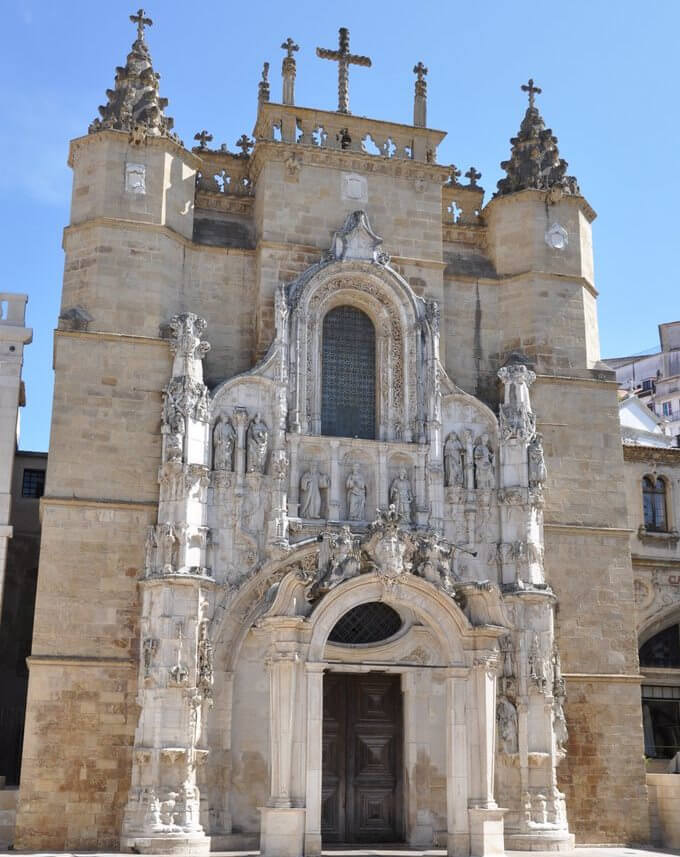
The current church and monastery of Santa Cruz are not only architectural and historical monuments of Coimbra, but also the tombs of the kings of Portugal, located in the center of the Lower City. They are rightly considered one of the most beautiful not only in Portugal, but also in all of Europe.
The church and monastery are built in the Manueline style, and therefore attract the attention of all guests of Coimbra: the facades of the buildings are richly decorated with stucco, sculptures of saints are located in the arches, and the church has an unusual color – sand.
Inside, the temple is no less beautiful: daylight breaks through colorful stained glass windows, and in the center of the hall there is an ancient organ.
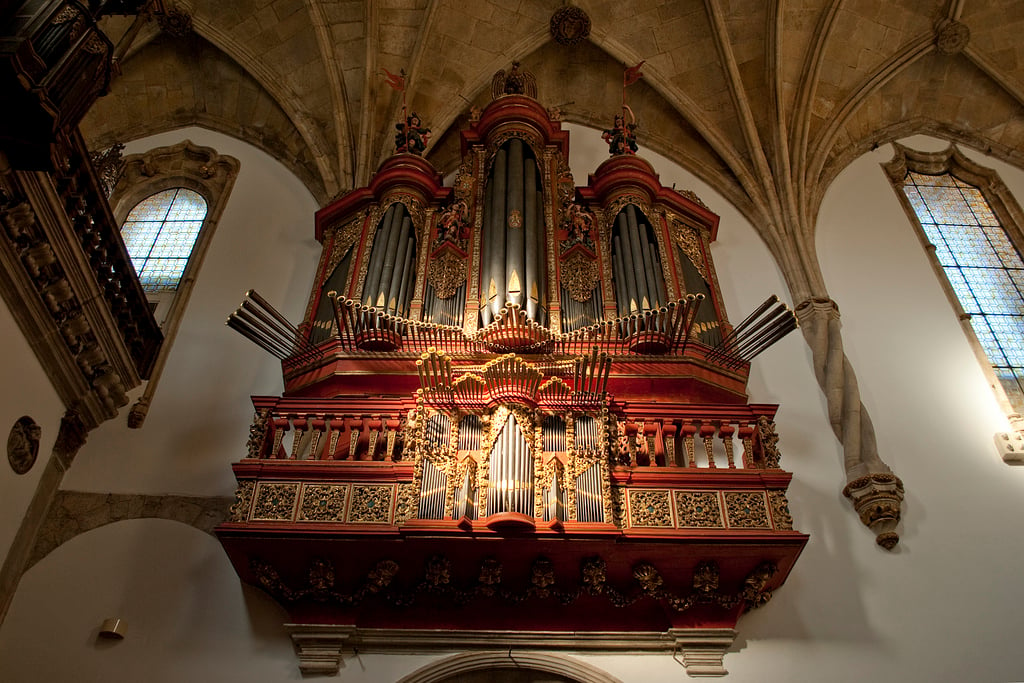
Despite its age, this musical instrument is still used for its intended purpose.
- Address of the place of interest: Praca 8 de Maio, Coimbra 3000-300, Portugal.
- Opening hours: Tue-Sat 11: 30-16: 00, Sun 14: 00-17: 00; Monday-closed.
- Price: 3 euros.
- Website: https://igrejascruz.webnode.pt.
Old Cathedral of Coimbra
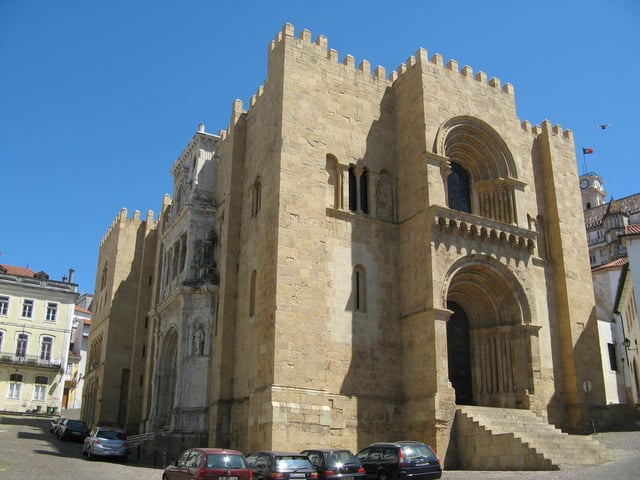
The old Cathedral of Coimbra is located in the very center of the city and has been attracting tourists for many centuries with its unusual facade: carved windows, high turrets and elegant arches. Inside the walls of the church are frescoed, there is an organ. On the second floor, you can access a small outdoor area that offers views of the city’s rooftops. Near the sanctuary is a beautiful garden and one of the largest squares in Coimbra.
The temple was built in the 12th century, and in 2013 it was included in the UNESCO Cultural Heritage List. Since then, the popularity of this place has increased several times.
- Area information: Largo da Sévelha, 3000-306 Coimbra, Portugal.
- Opening hours: 10: 00-17: 30, Sun and religious holidays-11: 00-17: 00.
- Entrance fee: 2.5€.
Parque Verde do Mondego
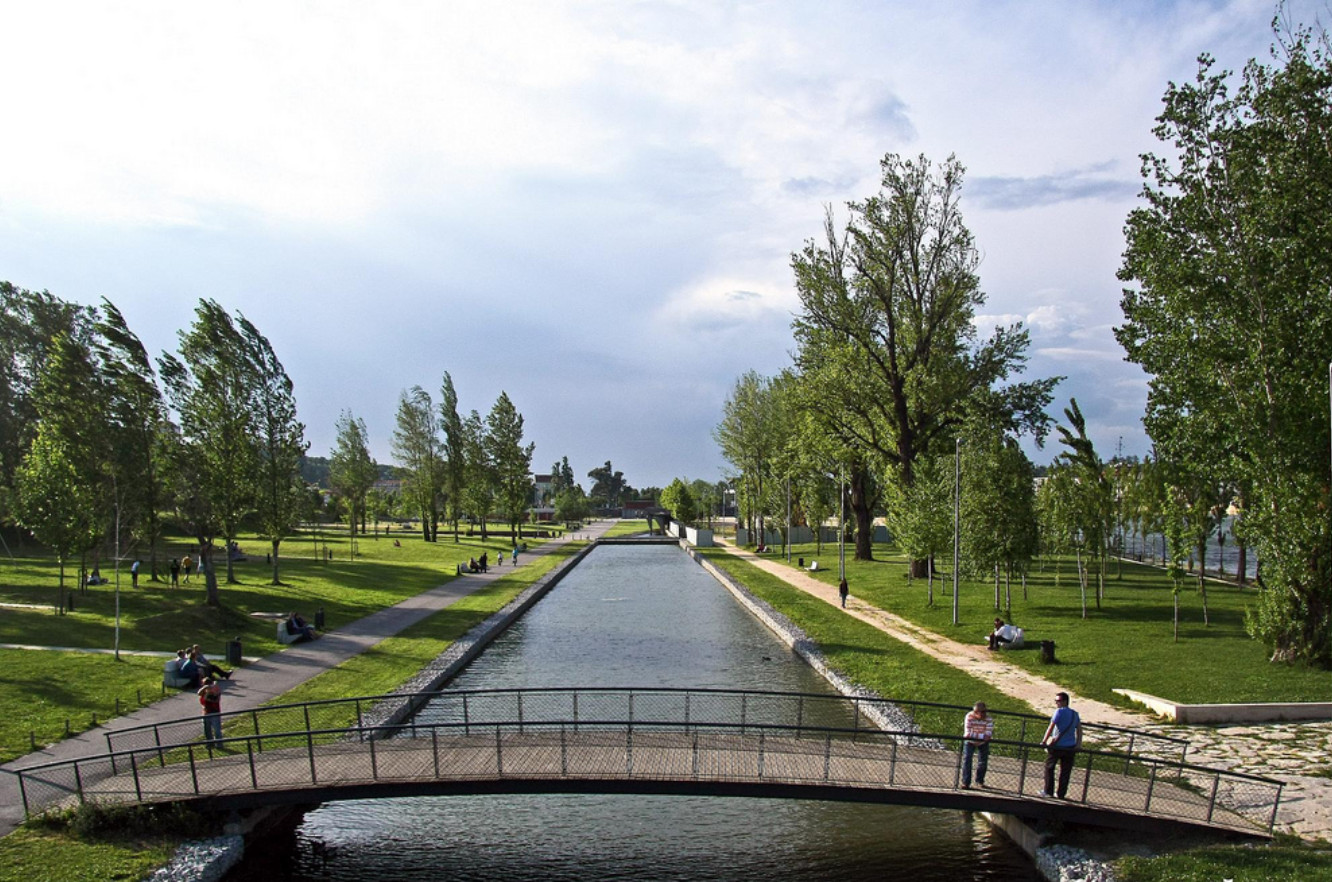
Mondego Park is a beautiful, well-kept place for walking and relaxing, located on the river bank. In the green area there are many benches and benches, where Portuguese people often rest, because the weather in Coimbra is always warm. If you are also tired, you can safely spread out the mat and relax on the grass or have a picnic-this behavior is only welcome.
The park has an alley with busts of famous people, and interesting plants grow here, which, with the help of gardeners, acquire an unusual shape. There is a fountain in the center of the river in summer.
There are no problems with food here either: there are many restaurants, cafes and souvenir shops.
- Location: Avenida da Lousa-Parque Verde, Coimbra, Portugal.
Miniature Portugal
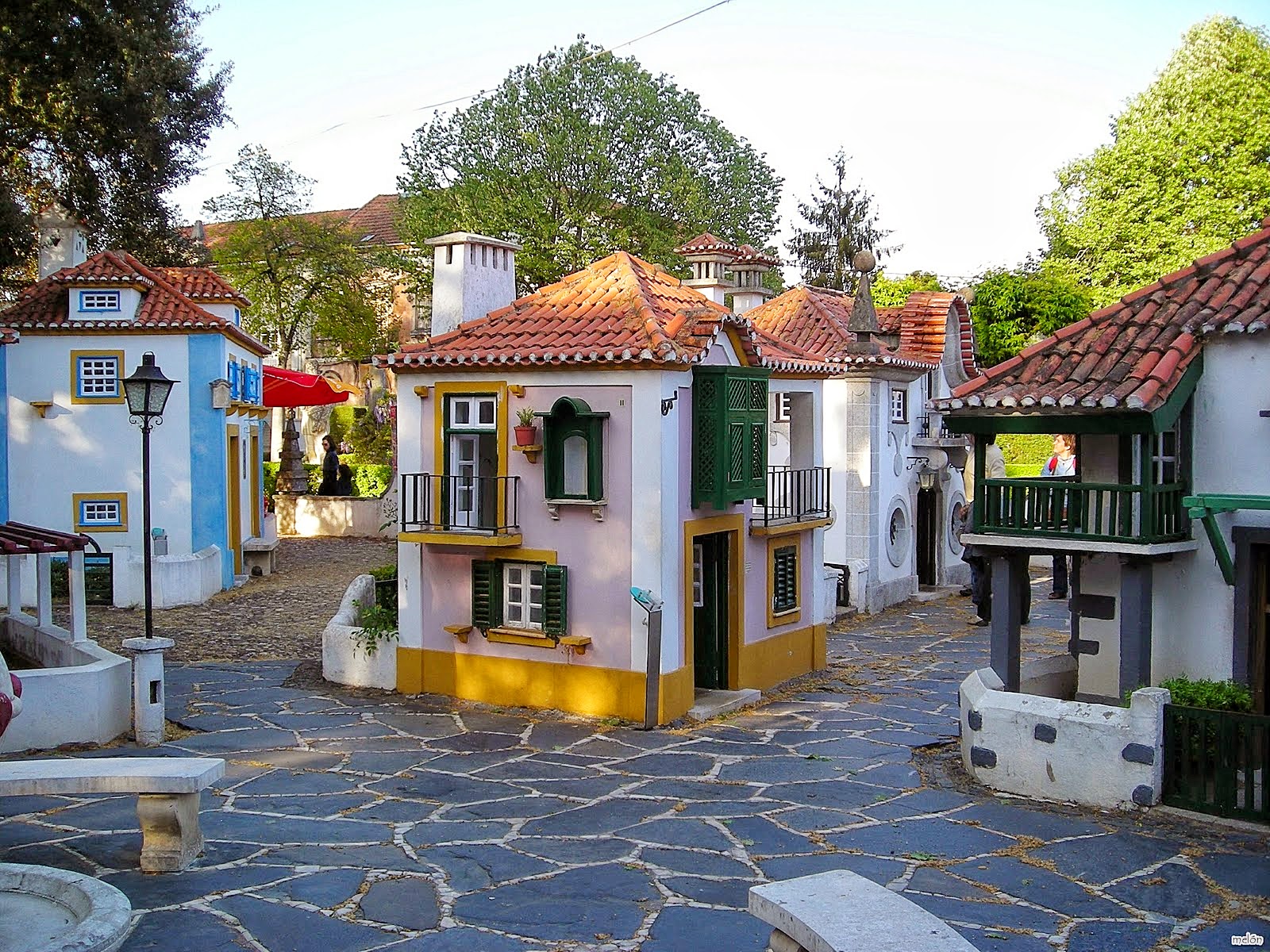
The miniature theme park is located on the banks of the Mondego River, in the new town. This unusual place can be divided into 3 parts: the first part of the exhibition is dedicated to the discoveries of Portuguese navigators, the second-to the sights of Coimbra and the country as a whole, and the third – to the Portuguese village. Here you can learn all about life in Portugal, both in the ancient and modern world.
If you are traveling with a child, then visit this park is simply necessary: there are a lot of small houses, as well as funny masks that will appeal to your child.
- Location attractions: Jardim do Portugal dos Pequenitos, Coimbra 3040-202, Portugal.
- Opening hours: from October 16 to February 28/29-from 10 to 17, from March to the end of May and from September 16 to October 15 – from 10 to 19, from June to September 15 – from 9 to 20.
- Price: for adults-10€, for children (3-13 years) and pensioners (65+) – 6€.
- Official website: www.fbb.pt.
8 May Square (Praça Oito de Maio)
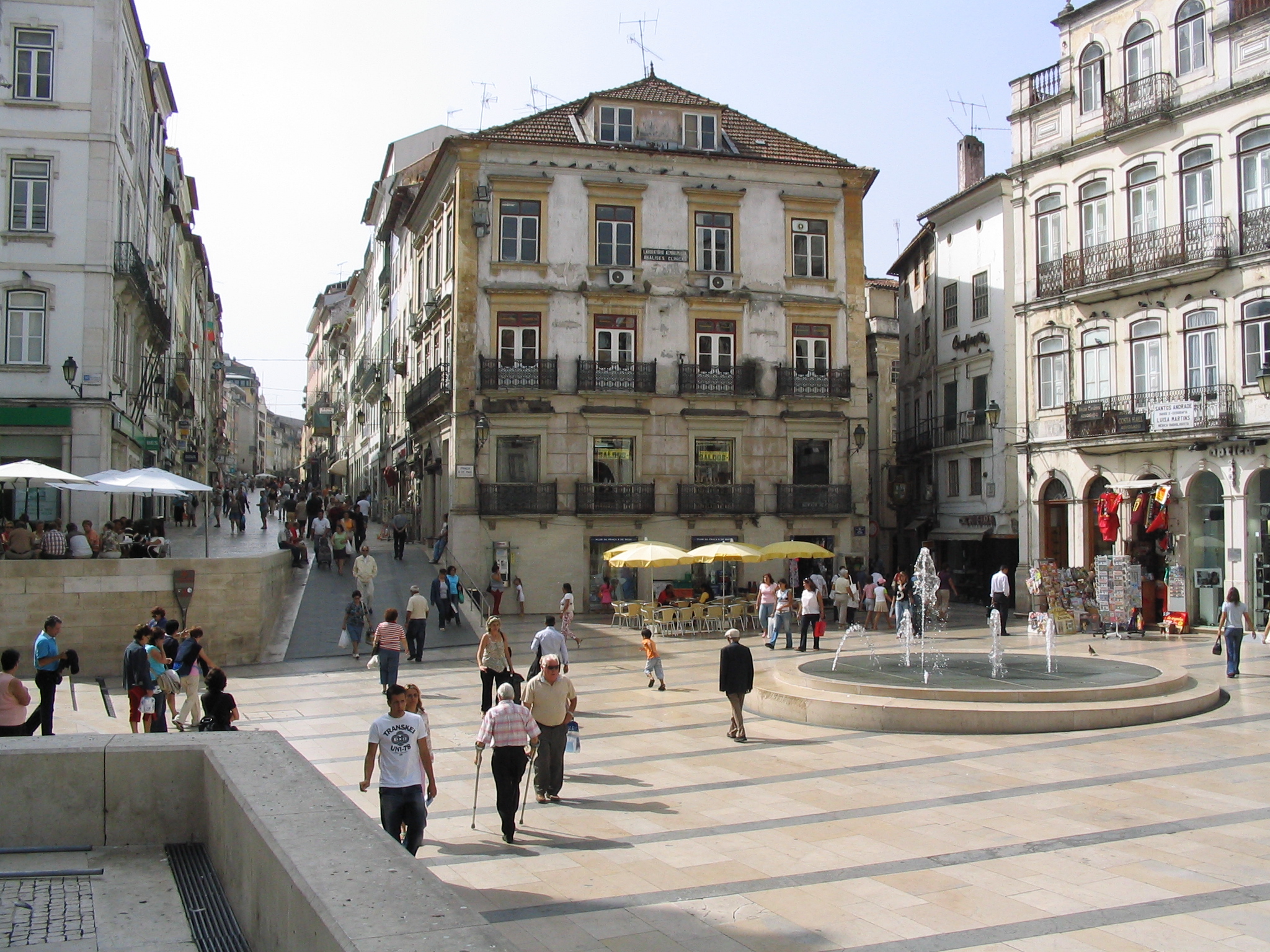
The Oito de Maio Square is one of the main university squares of Coimbra and is located in the heart of the Old Town, near the Church of the Holy Cross. This is a picturesque place where Portuguese people and tourists gather in the evenings. By the way, this particular square can be seen in most of the photos taken in Coimbra.
We can safely say that this square is the center of the social life of the settlement. There are many cafes, restaurants, bars, and shops here. And on weekends, there is a local market where Portuguese farmers sell their products.
Science Museum
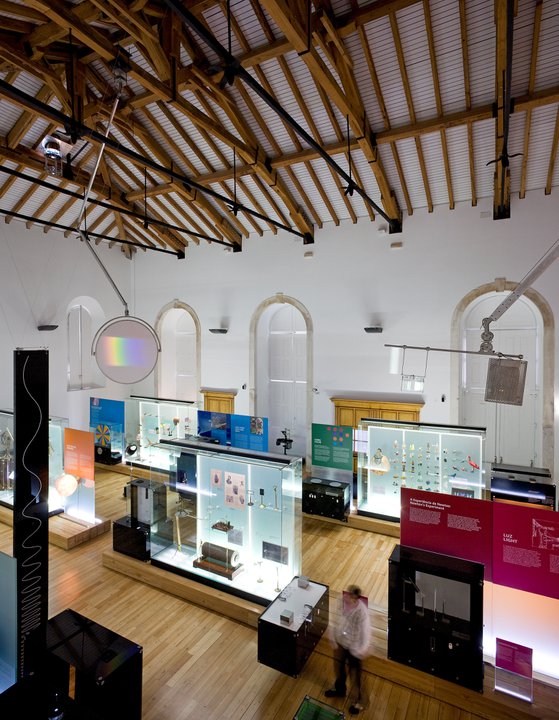
On the territory of the University of Coimbra there are many museums, one of which is the scientific museum. This is an amazing place, because here everyone can feel like an experienced scientist and conduct a series of experiments/
The museum also has a number of expositions dedicated to physics, zoology, geology, and mineralogy.
The museum can be divided into two parts: the first (old) and the second (modern). In the” ancient ” part of the museum there are historical exhibits and an important role is played by the room itself, built in the 16th century.
The modern part of the attraction was recently built, and it is here that visitors are allowed to conduct experiments and experiments.
Near the museum there is a souvenir shop and a small cafe.
- Location: Largo Marques de Pombal, Coimbra 3000-272, Portugal.
- Opening hours: from 9: 00 to 13: 00 and from 14: 00 to 17: 00 every day, except for official national holidays.
- Price: 5€, discounts are provided for children, students and the elderly.
Coimbra Academic Prison
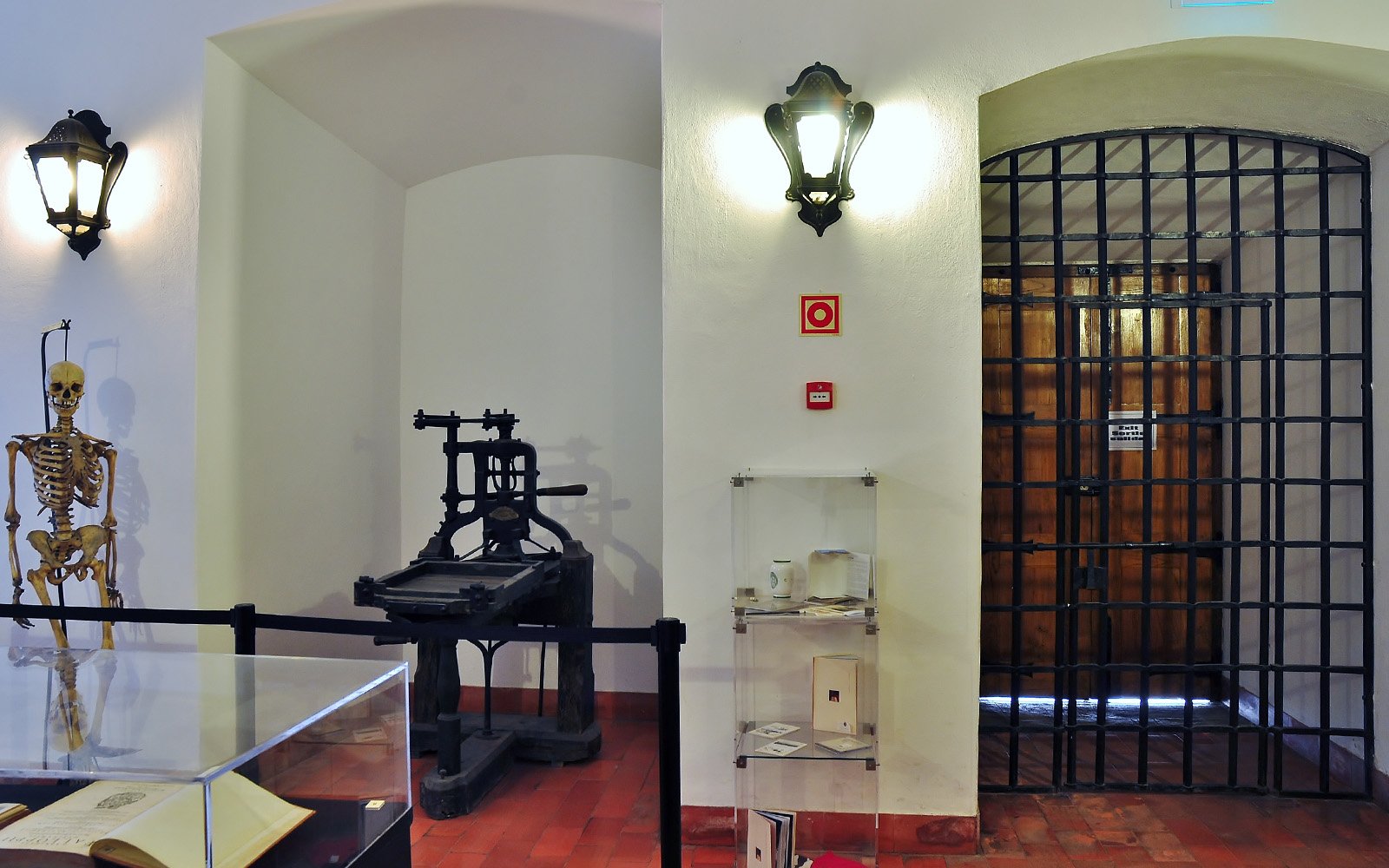
The Academic prison of the University of Coimbra was created specifically for delinquent students. It is fair to say that this place is not much like the usual prison, because among the inconveniences you can only note the lack of windows and the iron grating of the entrance. Otherwise, the “prison cells” resemble an old hotel of the 16th and 17th centuries.
Today, a small museum is located on the territory of the former prison, where you can walk around the cells and see how the prisoners lived.
- Where to find a tourist attraction: Largo da Porta Ferrea-Foyer da Biblioteca Geral / Universidade de Coimbra, Coimbra 3040-202, Portugal.
- Opening hours: 9: 00-19: 00.
How to get to Coimbra
The transport network in Portugal is well developed, and therefore it is not difficult to get from one city to another.
You can get to Coimbra from Lisbon:

- By bus
There are two routes to get to Coimbra. The first one starts at the Lisboa Sete Rios bus station and ends at the Coimbra stop.
Buses depart every 15-30 minutes (sometimes 2-3 pieces at a time) from 7: 00 to 23: 30. Travel time is 2h 20 min. Carriers are Rede Expressos and Citi Express. The full ticket price is 13.8 € . Tickets can be purchased on the website rede-expressos.pt.
If the first option is not suitable for some reason, then you can give preference to the second one: the starting stop is Martim Moniz (line 208). Take the Carris Lisboa bus to Lisboa Oriente station. Then transfer to the Auto Viacao do Tamega bus. It takes you from the Lisboa Oriente stop to Coimbra. Travel time – 4h 40 min. The cost of the entire trip will cost 16-25€.
- By train
If you prefer the train, you should start your journey at Lisboa Santa Apolonia train station. Take the Intercity train from Portuguese Railways (CP) to Coimbra-B station. Travel time is 1h45min. Ticket prices vary from 15 to 30€.
You can get to Coimbra from Porto by:

- By bus
There are many buses from Porto (most often from the Portuguese company Rede-Expressos).
Coimbra buses depart from the Campo 24 de Agosto, Porto Metro Station. Travel time is 1 hour and 30 minutes. The fare is 12€.
Current prices and timetables can be found on the carrier’s website rede-expressos.pt.
- By train
Departure – from Samraph Central Station. The final station is Coimbra B (however, it is far from the center of Coimbra, so you can also take any regional train to Coimbra A station, which is located in the heart of the city). The price varies from 9 to 22€ depending on the type of train and class of car. Travel time is 1.5-3 hours. You can find out the current schedule and purchase tickets on the website www.cp.pt.
Interesting facts
- Up to a third of Coimbra’s population is connected to the university’s activities: these are students, staff, and teachers.
- The city has an official website — www.cm-coimbra.pt. Here you can find information about events and attractions, investments, education, and so on.
- In 2004, the Coimbra Stadium hosted matches of the European Football Championship.
- The city’s Botanical Garden is the oldest and largest in Portugal.
Coimbra (Portugal) is one of the most beautiful cities in Europe, which is worth visiting.
Guimaraes – the birthplace of the first king of Portugal

